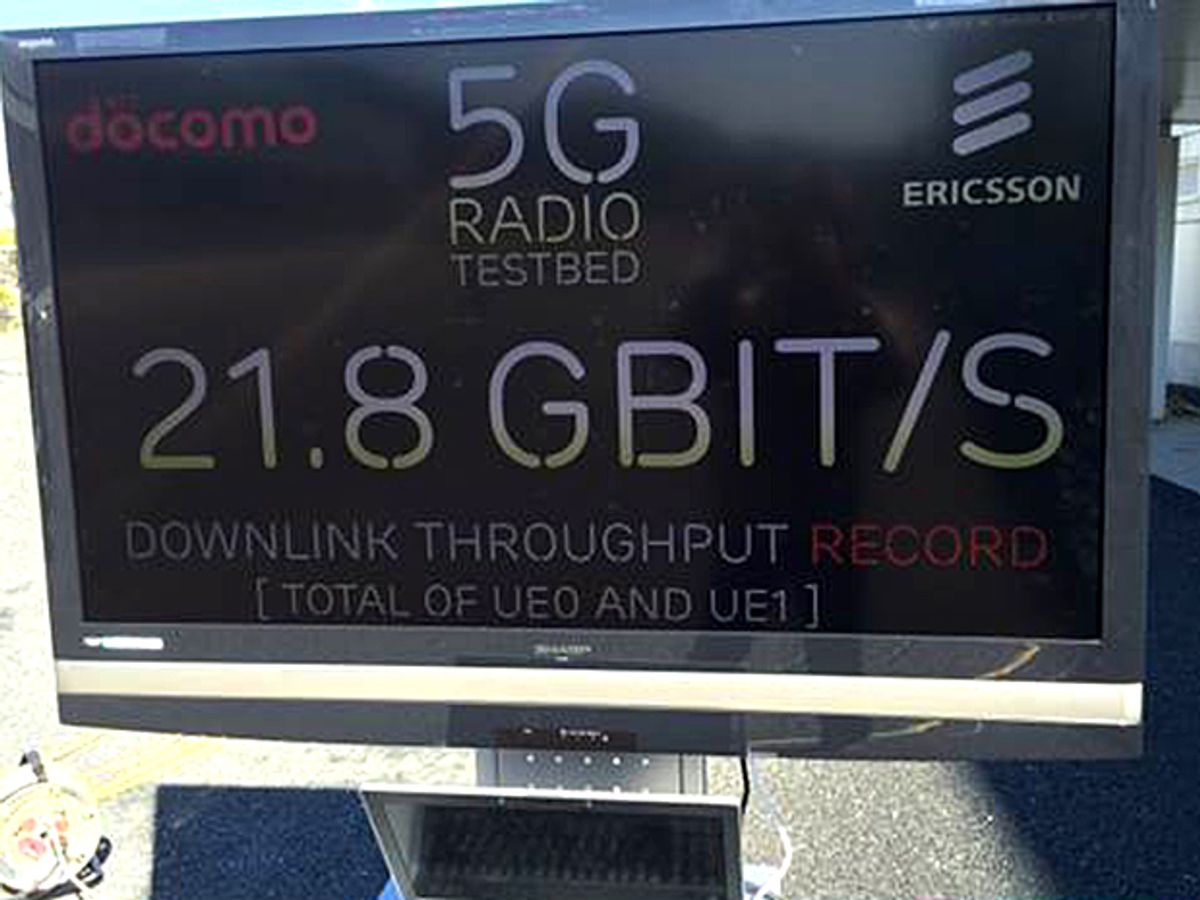Things are moving at blistering speed in the world of next-generation 5G mobile communications—even though many mobile users have still or only recently upgraded to 4G LTE communications, and even while 4G continues to evolve.
Nevertheless, four of the telecom industry’s big hitters—Japan’s NTT Docomo, South Korea’s KT and SK Telecom, and Verizon in the United States—are not waiting for stragglers to catch up. Yesterday, at the annual Mobile World Congress in Barcelona, the carriers unveiled a plan to form the 5G Open Trial Specification Alliance with the aim of driving the technology forward. Meanwhile, Docomo and Sweden’s Ericsson announced that they achieved a cumulative 20-gigabit-per-second transmission speed with two connected 5G terminals in outdoor trials.
The four-party alliance seeks to hammer out agreements on technical fundamentals resulting from the companies’ individual 5G trials. They would then use their collective muscle to have the agreed upon specs “serve as a common, extendable platform for different 5G trial activity around the world,” as the announcement put it.
“In particular, we want to decide which 5G spectrum bands to use in a global industry,” Yoshihisa Kishiyama, Senior Research Engineer at Docomo’s 5G Laboratory, told IEEE Spectrum. “And we want to finalize 5G specifications by the end of 2018.”
If successful, this would help create standards for network equipment makers to follow, bringing the advent of fifth generation communications ever closer. Docomo, for one, has publicly committed itself to having 5G service up and running in time for the Tokyo Olympics in 2020.
As outlined by the International Telecommunications Union, 5G promises “a seamlessly connected society in the 2020 timeframe and beyond that brings together people along with things, data, applications, transport systems, and cities in a smart networked communications environment.”
To achieve all this, Docomo noted in a July 2014 White Paper, 5G would require data rates 100 times higher than today’s wireless networks offer, plus a reduction in latency to 1 millisecond, a 1,000-times increase in systems capacity, as well as a reduction in energy consumption. And with the coming avalanche of Internet-of-Things devices that will be continuously connected to cloud services, Docomo is targeting “a 100-fold increase in the number of simultaneously connected users compared to 4G LTE.”
It’s expected that 5G will need to utilize higher frequency spectrums ranging from 6 to 66 gigahertz. This would take it into the millimeter-wave band, which will enable multi-beam multiplexing and massive multi-input-output (MIMO) technologies.
So rather than broadcasting signals from a base station in all directions, individual signals can be transferred between individual terminals and a base station as required—and in crowded hot spots by means of a cluster of smaller antennas. This scenario should eliminate interference from nearby terminals and slowdowns in data speeds. It’s also expected to make better use of signal power and more efficient use of bandwidth.

In a trial last Sunday outside Docomo’s R&D Center in Yokosuka, just south of Tokyo, this multi-beam MIMO technology was used to transmit data with a cumulative 20-Gbps throughput. Docomo and Ericsson engineers set up four mini base-stations, each equipped with 64 antenna elements, to create one super-sensitive base station. Two Ericsson 5G prototype terminals, located 9 meters and 3 meters respectively from the base station were each able to simultaneously download over 10 Gbps over a 15-GHz wireless band.
In a separate trial on the same day, the companies successfully transmitted data at 10 Gbps over a distance of 70 meters from the base station and then at 9 Gbps over a distance of 120 meters.
“Our target [upon commercialization] is to achieve several gigabits per second in 2020 and over 10 gigabits per second after that,” says Kishiyama. He added that Docomo hopes to see the arrival of new 5G applications “earlier than 2020, so as to promote 5G before then.” But he would not say what these applications might be.



